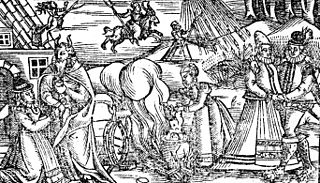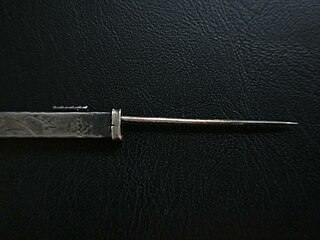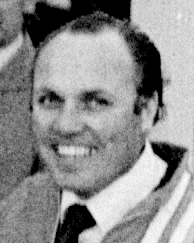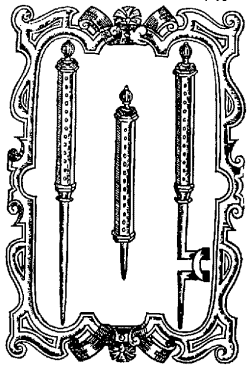Related Research Articles

Isobel Gowdie was a Scottish woman who confessed to witchcraft at Auldearn near Nairn during 1662. Scant information is available about her age or life and, although she was probably executed in line with the usual practice, it is uncertain whether this was the case or if she was allowed to return to the obscurity of her former life as a cottar’s wife. Her detailed testimony, apparently achieved without the use of violent torture, provides one of the most comprehensive insights into European witchcraft folklore at the end of the era of witch-hunts.

Matthew Hopkins was an English witch-hunter whose career flourished during the English Civil War. He was mainly active in East Anglia and claimed to hold the office of Witchfinder General, although that title was never bestowed by Parliament.
The Witchcraft Acts were historically a succession of governing laws in England, Scotland, Wales, Ireland, and the British colonies on penalties for the practice, or—in later years—rather for pretending to practise witchcraft.

Sir William Arrol was a Scottish civil engineer, bridge builder, and Liberal Unionist Party politician.

During the height of the witch trials of the 16th and 17th centuries, common belief held that a witch could be discovered through the process of pricking their skin with needles, pins and bodkins – daggerlike instruments for drawing ribbons through hems or punching holes in cloth.
Pierre de Rosteguy de Lancre or Pierre de l'Ancre, Lord of De Lancre (1553–1631), was the French judge of Bordeaux who conducted the massive Labourd witch-hunt of 1609. In 1582 he was named judge in Bordeaux, and in 1608 King Henry IV commanded him to put an end to the practice of witchcraft in Labourd, in the French part of the Basque Country, where over four months he sentenced to death several dozen persons.

Len Silver is a former motorcycle speedway rider and is former promoter of the Rye House Rockets.
John Robert Vickers (Ken) McKinlay was an international speedway rider, captaining Scotland, England, Great Britain and Europe teams. He also finished on the rostrum of the British Speedway Championship finals twice, second in 1964 and third in 1965. His nickname Hurri-Ken was given to him by famous speedway promoter Johnnie Hoskins.
Cyril Manners Roger was an international motorcycle speedway,who rider reached the final of Speedway World Championship five times.
Derick Tallentire Close was a British motorcycle speedway rider, who reached the final of Speedway World Championship in 1952.
The Great Scottish Witch Hunt of 1661–62 was a series of nationwide witch trials that took place across the whole of Scotland during a period of sixteen months from April 1661. At least 660 people were tried for witchcraft and various forms of diabolism.

In early modern Scotland, in between the early 16th century and the mid-18th century, judicial proceedings concerned with the crimes of witchcraft took place as part of a series of witch trials in Early Modern Europe. In the late middle age there were a handful of prosecutions for harm done through witchcraft, but the passing of the Witchcraft Act 1563 made witchcraft, or consulting with witches, capital crimes. The first major issue of trials under the new act were the North Berwick witch trials, beginning in 1590, in which King James VI played a major part as "victim" and investigator. He became interested in witchcraft and published a defence of witch-hunting in the Daemonologie in 1597, but he appears to have become increasingly sceptical and eventually took steps to limit prosecutions.

The great Scottish witch hunt of 1649–50 was a series of witch trials in Scotland. It is one of five major hunts identified in early modern Scotland and it probably saw the most executions in a single year.
Geillis Duncan also spelled Gillis Duncan was a young maidservant in 16th century Scotland who was accused of being a witch. She was also the first recorded British named player of the mouth harp.

Margaret Aitken, known as the Great Witch of Balwearie, was an important figure in the great Scottish witchcraft panic of 1597 as her actions effectively led to an end of that series of witch trials. After being accused of witchcraft Aitken confessed but then identified hundreds of women as other witches to save her own life. She was exposed as a fraud a few months later and was burnt at the stake.

The Bute witches were six Scottish women accused of witchcraft and interrogated in the parish of Rothesay on Bute during the Great Scottish Witch Hunt of 1661–62. The Privy Council granted a Commission of Justiciary for a local trial to be held and four of the women – believed by historians to be Margaret McLevin, Margaret McWilliam, Janet Morrison and Isobell McNicoll – were executed in 1662; a fifth may have died while incarcerated. One woman, Jonet NcNicoll, escaped from prison before she could be executed but when she returned to the island in 1673 the sentence was implemented.
Beatrix Leslie was a Scottish midwife executed for witchcraft. In 1661 she was accused of causing the collapse of a coal pit through witchcraft. Little is known about her life before that, although there are reported disputes with neighbours that allude to a quarrelsome attitude.
Walter Bruce (c.1605–1673) was a Scottish minister who served as 'Constant Moderator' of the General Assembly of the Church of Scotland from 1662 until 1673, a unique role in the history of the Church of Scotland.
Margaret Dunholm was a Scottish woman from Burncastle near Lauder who was accused of witchcraft and executed in 1649.
Marioun Twedy or Marion Tweedy was accused of witchcraft in Peebles in the Scottish Borders in 1649. She was accused of causing the death of a woman and her child and of using charms to cure animals. She refused to confess to these accusations. However, the witchpricker condemned her for finding 'the devil's mark' on her.
References
- ↑ Mcdonald, S W (September 1997). "The Devil's Mark and the Witch-Prickers of Scotland". Journal of the Royal Society of Medicine. 90 (9): 507–511. doi:10.1177/014107689709000914. ISSN 0141-0768. PMC 1296533 . PMID 9370991.
- ↑ Maxwell-Stuart, Peter G. (2003). Witch hunters: professional prickers, unwitchers & witch finders of the Renaissance. Stroud: Tempus. ISBN 978-0-7524-2339-5.
- ↑ Levack, Brian P. (2015-09-25). The Witch-Hunt in Early Modern Europe (4 ed.). Routledge. doi:10.4324/9781315685526. ISBN 978-1-315-68552-6.
- ↑ Maxwell-Stuart, Peter G. (2003). Witch hunters: professional prickers, unwitchers & witch finders of the Renaissance. Stroud: Tempus. ISBN 978-0-7524-2339-5.